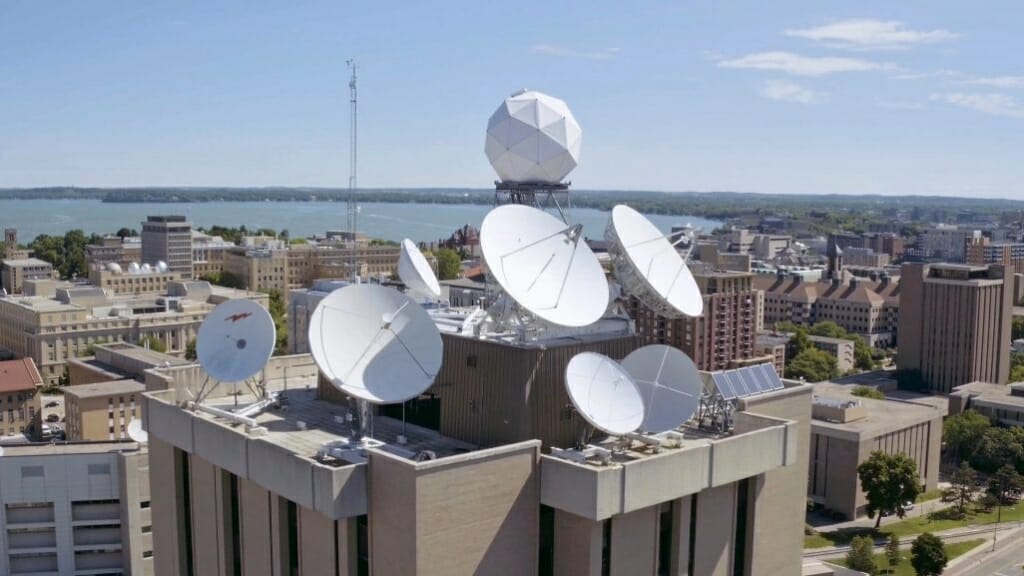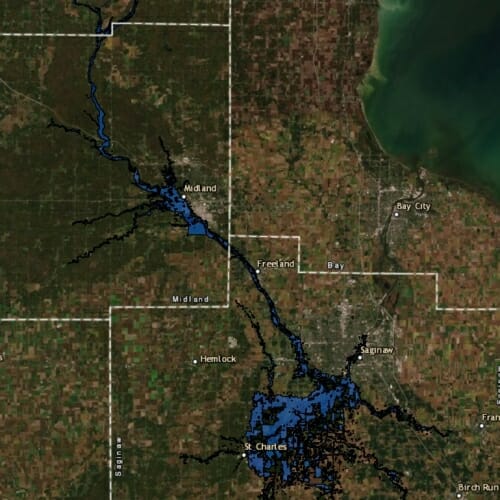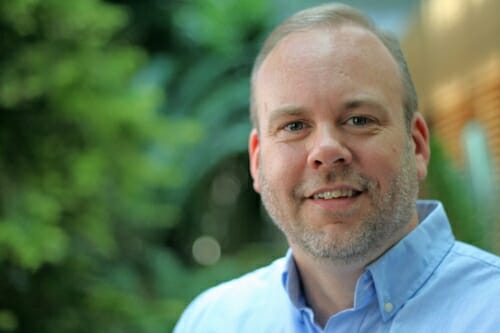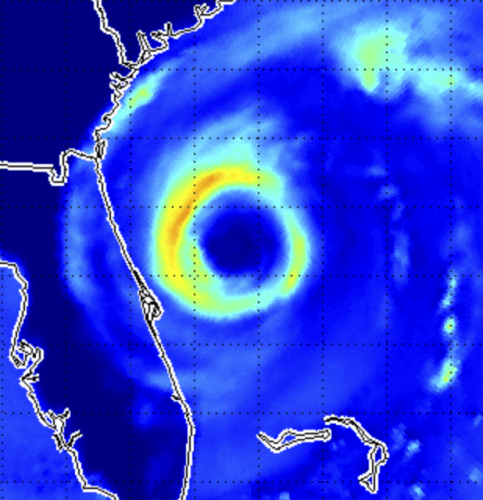40 years and counting, NOAA renews partnership with UW

Rooftop of the UW–Madison Atmospheric, Oceanic and Space Sciences building that houses the Cooperative Institute for Meteorological Satellite Studies. Credit: UW News
For 40 years, the National Oceanic and Atmospheric Administration has partnered with the University of Wisconsin–Madison to conduct critical research in satellite meteorology through its Cooperative Institute for Meteorological Satellite Studies.
NOAA announced this month that CIMSS will continue at UW–Madison for the next five years, in recognition of the strength and value of the decades-long collaboration. The award brings up to $150 million to the research institute.
“Our selection allows researchers, faculty, and students at UW–Madison to work with NOAA scientists to conduct cutting-edge research to ensure that our environmental satellites provide the maximum benefits to society,” says CIMSS Director Tristan L’Ecuyer. “This award represents a substantial investment by NOAA in the UW–Madison to continue a very successful partnership that will shape the way we collect and use satellite weather information in the future and help NOAA meet the nation’s current and future weather and climate needs.”
CIMSS is recognized internationally for its satellite expertise, spanning geostationary and polar-orbiting platforms. This network of satellites forms the backbone of a global observing system developed to monitor our planet and ensure public safety.
Working with NOAA scientists based at CIMSS, university researchers have tapped into the wealth offered by satellite data to help design and demonstrate new satellite sensor technologies, develop products and applications of data, and transition research into operational forecast models that benefit the public.
CIMSS scientists are at the forefront of understanding weather, climate, and atmospheric processes and have produced better ways to detect and forecast severe weather, including hurricanes; wildfires; flash drought, and volcanic eruptions. They have also helped improved analyses of environmental and climate trends.
L’Ecuyer notes that the institute supplies this critical information to decision makers at the city, state, and national levels.
In addition to its commitment to research, CIMSS also engages hundreds of K-through-12 and university students in educational opportunities each year and provides advanced training for professionals already in the field. Its location on campus benefits from in-house expertise to fulfill this mission.
“Sharing a building with the Department of Atmospheric and Oceanic Sciences (AOS) on the UW campus enables CIMSS to provide comprehensive education and public outreach programs,” said L’Ecuyer. “We are helping the National Weather Service achieve its goal of a ‘Weather-Ready Nation’ by creating a more informed society and training the next generation of weather and climate scientists.”
While CIMSS officially began in 1980, the university’s collaboration with the government began years earlier. Verner Suomi, founder of the UW–Madison Space Science and Engineering Center (SSEC) in which CIMSS is housed, sought closer ties with his federal colleagues as they worked on complementary aspects of the earliest geostationary weather satellites, their sensors, and data.

CIMSS researchers are using new tools to study flooding such as near Midland and Saginaw, Michigan on May 20, 2020. Credit: Shane Hubbard, CIMSS
Now known as the “Father of Satellite Meteorology,” Suomi met with university and NOAA administrators to make arrangements for federal scientists to work within SSEC. In 1976, a small contingent of NOAA employees arrived on the Madison campus. One of those scientists, William L. Smith, would become the second CIMSS director in 1982, following Suomi’s two-year stint.
Forty years of collaboration – and 40 years of revolutionary scientific achievements – have transformed the field of satellite meteorology. The university looks forward to building on its success and relationship with NOAA.
“This is exciting news for UW–Madison and for NOAA,” says Vice Chancellor for Research and Graduate Education Steve Ackerman. “This long-term partnership between our two organizations demonstrates the value of university and government partnerships, and how research can transition to applications that have positive impacts on the citizens of Wisconsin and the US—a fine example of the Wisconsin Idea.”





